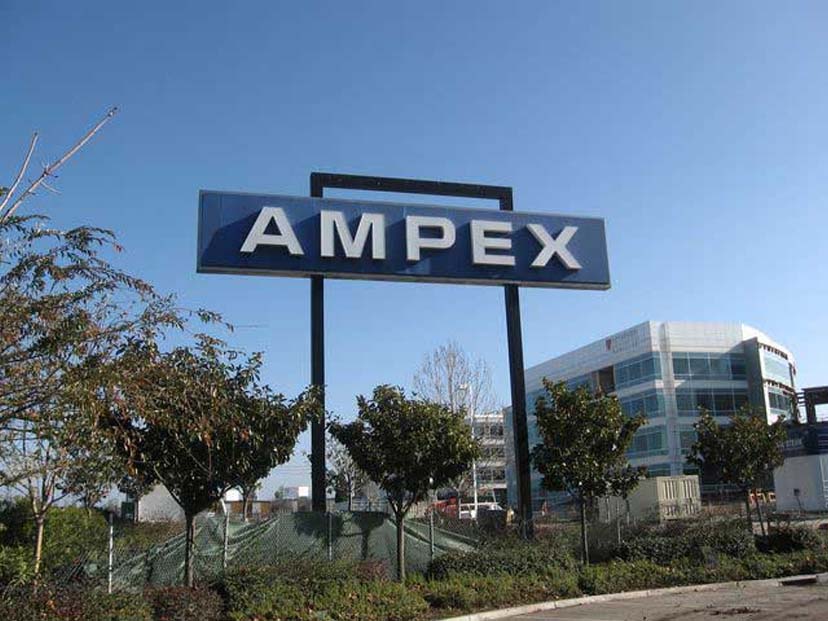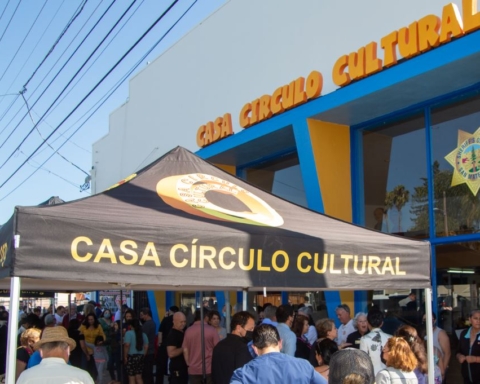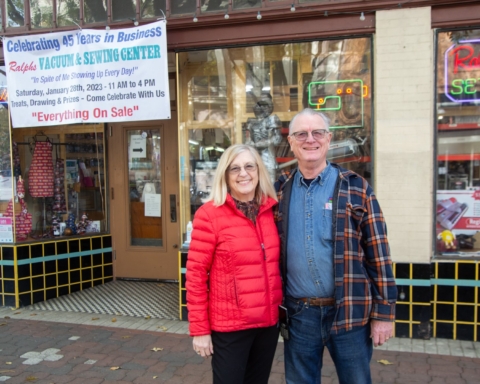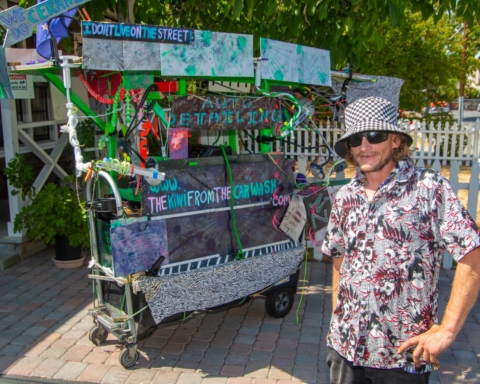Perhaps centuries from now, when the waters of the Great Global Warming Flood have subsided and the human race has restored itself, an archaeological dig will stumble onto a sealed chamber at what used to be the campus of Stanford University.
There, with great excitement, they will find an artifact that will astound them, a great and awesome monolith that they will reverently place in the same pantheon as the Dead Sea Scrolls and the Rosetta Stone.
Six feet high, 40-feet long, it will speak to them across the centuries, mystical and from a bygone era lost in the mists of time: And it shall read: “Ampex.”
Yes, they’ve stashed the sign in a storage room, perhaps never to be seen again, judging by the efforts Stanford is making to find the sign a new home.
And, size notwithstanding, don’t plan on putting the sign in your front yard.
That’s exactly what Tim Harrison wants to do – he’s got a spot all picked out adjacent to his parking lot at the Canyon Inn, a landmark in its own right.
Like so many others, Ampex engineers were not immune to the alluring burgers and fish tacos of the Canyon Inn and they frequented the local bistro with some regularity.
Asked why he’d want to host this piece of local memorabilia, Harrison said, “Look around,” and pointed to the staggering array of sports and local history items that coat the walls of the Canyon Inn. “I’m just that kind of guy,” he said.
There is a history of these things working out. When Mel’s Bowl was torn down in 2011 to make way for apartments, the city required the developer to find another location for the art deco neon sign.
It found a home at the Redwood City Car Wash on El Camino Real in the northern end of the city after Elaine Breeze, vice president of developer Urban Housing Group successfully weaved her way through various agencies.
But Stanford, with all the academic dignity it can muster, doesn’t want the Ampex sign ending up at some random business location.
“We are primarily interested in groups that have some affiliation to preserving historic and/or technological elements of the Peninsula,” said John Donahoe, director of Planning and Entitlement at Stanford’s Land, Buildings and Real Estate office.
“While we have received some recent requests for the sign,” Donahoe said, “I would characterize these requests as from private individuals who want the sign for private use. While we appreciate their interest in the sign, we remain hopeful that we can find a public home for the sign.”
Specifically, Donahoe said, “Our preference is to work with a local historical society or technology museum, preferably on the San Francisco Peninsula.”
In short, he said, somewhere “appropriate.”:
No car washes need apply.
Or, to put it another way, you’re never going to see that sign again.
But it should be quite a find for those archaeologists.






